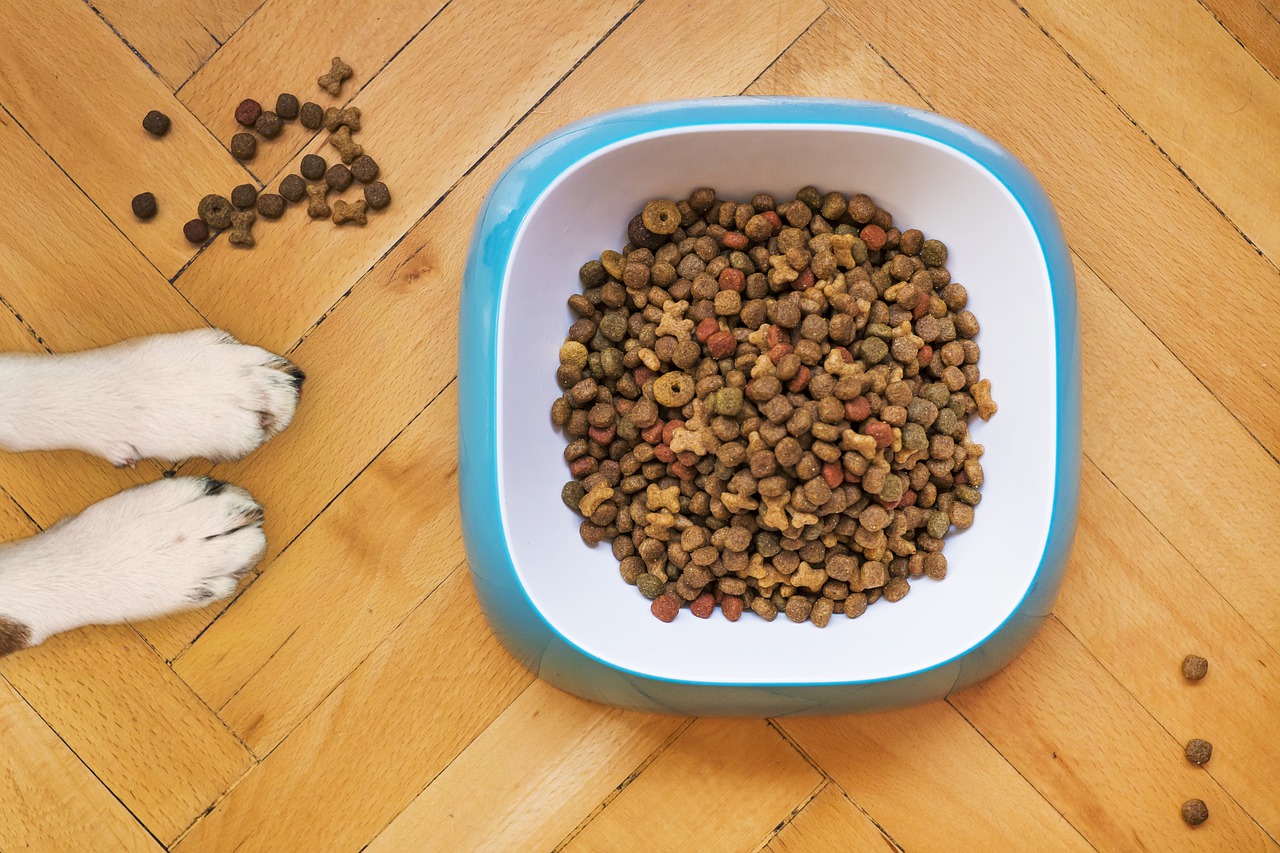Like humans, dogs can also suffer from low blood sugar or hypoglycemia. This condition will impact your pet’s energy level and bodily functions. If not controlled, hypoglycemia can ultimately lead to death. So for this post, I will share a guide on how to treat hypoglycemia in dogs and what you can do to prevent it.
It’s important for dog owners like us to understand our pet’s health. This will help prevent expensive vet visits and life-threatening symptoms. Read on to know more about this condition.
What is hypoglycemia in dogs?

Hypoglycemia is an abnormal decline of the body’s glucose level. Also known as low blood sugar, hypoglycemia occurs when the canine’s glucose supply gets depleted and not replenished properly.
Sugar is the main source of energy for a living body. If it becomes too low, the internal organs will be deprived of their much-needed fuel. When your dog experiences this, it will start to weaken and the risk of developing other complications.
Take note that puppies under three months are prone to this because of their small bodies. This is why pups are fed multiple times a day in a small amount to augment their blood sugar levels. If not, they will easily succumb to death.
Still, adult canines are no exceptions to this. Failure to feed or diagnose your dog’s condition can lead to a life-threatening case of hypoglycemia.
Signs that your dog has hypoglycemia
Hypoglycemia is easy to determine as it will always manifest serious symptoms. Here are some that you need to watch out for:
- Weakness and lethargy
- Seizures
- Muscle spasms
- Trembling
- Irregular heartbeat
- Lack of coordination
- Poor response to stimuli
- Blindness
- Unconsciousness
- Increased urination and/or thirst
If you notice your dog exhibiting these symptoms, you should bring it to the vet right away. You can also perform the first-aid steps below to improve your dog’s condition.
Take note that hypoglycemia will lead to worse repercussions if not treated right away. Watching out for the early signs will save your dog from further health risks.
Causes of hypoglycemia
Aside from lack of food, there are other possible culprits behind hypoglycemia. It’s important to understand this, as some of the potential causes will put your pet’s life at risk.
Here are some of the potential causes of hypoglycemia:
🐶Delayed meal times

For puppies, a missed meal can already lead to hypoglycemia. Remember that pups have small bodies, and they can only store small amounts of glucose at a time. And since they are quite playful and yappy, puppies are at high risk of hypoglycemia.
This is the reason why puppies are fed four to five times a day, more if it’s a miniature or teacup breed.
🐶Insulinoma
The pancreas is the internal organ responsible for the production of insulin. If it suffers from abnormalities or imbalances, your dog will experience glucose problems. This could include hypoglycemia.
Tumors can grow in a dog’s pancreas, which is called insulinomas. This growth will cause the excessive production of insulin. In turn, it will make the blood sugar level of the canine drop significantly and in a persistent manner.
The good thing is that insulinomas are rare and it doesn’t usually spread to other body parts. Still, you should get your dog checked if you suspect that it’s suffering from recurring hypoglycemia.
🐶Excessive exercise
Too much exercise will also trigger hypoglycemic episodes. As your dog moves, it burns sugars in the process. Overdoing the exercise will cause their energy supply to be extremely low, thus hypoglycemia.
It’s important to match the amount of exercise based on breed requirements as well as the schedule. Dogs with too much in-between meals should be given exercise close to the next meal. This way, you can replenish your pet’s sugar level after the calorie-burning activity.
🐶Liver problems
Hepatic disease can lead to malfunctions in glucose homeostasis. This is the process by which the body balances glucagon (a hormone responsible for blood sugar level control) and insulin.
But what’s the liver got to do with it? Well, glucose homeostasis is reliant on hepatic glycogen storage or sugar stored in the liver. Our bodies release enzymes to break down this glucose, but glycogen will build up in the liver if an enzyme is missing. This will cause hypoglycemia since the body can’t release the much-needed glucose into the bloodstream.
🐶Poisoning due to artificial sweeteners
Artificial sweeteners like Xylitol are extremely dangerous to dogs. Even a small amount has high toxicity levels, which can put a canine’s life at risk. Initially, Xylitol poisoning will cause hypoglycemia. If not treated, the condition will lead to liver failure, seizures, and even death.
The worst part is that Xylitol is present in many food items you may unknowingly give your dog. The likes of bubble gum, pancake syrups, drink powder, candy, and even barbecue sauces can be mixed with this artificial sweetener.
🐶Portosystemic shunt
Portosystemic shunt occurs when there’s an abnormal vessel between the dog’s systemic circulation and portal vascular system. What happens is that the blood gets shunted or recirculated into the systemic circulation.
When this occurs, there would be a decrease in insulin metabolism in the canine’s body. This will also lead to low levels of hepatic glycogen storage, which are contributing factors to hypoglycemia.
🐶Addison’s disease

Addison’s disease is a vague condition, which can be tricky to diagnose in dogs. Canines that suffer from this condition will exhibit lethargy, diarrhea, increased urination, hypoglycemia, and unplanned weight loss.
While many cases of Addison’s disease in dogs won’t progress into something serious, some canines will experience severe symptoms. It’s called an Addisonian crisis, and it requires immediate veterinary care to combat the life-threatening repercussions.
🐶Cancer
Lastly, some types of cancer can also trigger hypoglycemia in dogs. Pancreatic cancer is just one of the possible causes of hypoglycemia.
Take note that hypoglycemia is just one of the potential signs of cancer. It’s important to get your dog checked and treated right away to increase its chances of survival.
How to treat hypoglycemia in dogs
The first step in handling hypoglycemia is diagnosing and treating any underlying causes. But if you can’t buy time for that, the following are some of the immediate solutions for canine hypoglycemia. This is intended to improve your pet’s condition so that you can bring it to the vet for further treatments:
✔️Corn syrup rubbed on the gums

Hypoglycemic dogs that are still conscious can be given corn syrup or honey. You need to rub it into the canine’s gums and make sure the pooch licks and swallows it. The sugar content of corn syrup or honey will help spike up your dogs’ blood sugar levels.
This method will prevent hypoglycemia from worsening and taking a deadly turn. So if your dog is prone to hypoglycemic episodes, you should keep honey or corn syrup available. You can also use a sugar paste made of table sugar with a small amount of water.
However, you should make sure that the honey or corn syrup you’re using doesn’t have artificial sweeteners. Otherwise, it will make your pet’s condition worse. It can also lead to poisoning, which is another health problem you’ll have to deal with.
Also, you should never feed your puppy or dog with these if it’s unconscious. If you do so, the corn syrup or honey will be inhaled, which will then cause other problems.
✔️Provide glucose paste
Another option you have is over-the-counter glucose pastes. There are glucose pastes formulated for pets, which is a fast-acting formula to combat the onset of hypoglycemia.
Unlike corn syrup or honey, glucose pastes have an ideal sugar level to help restore your dog’s energy. This will help you buy time as you call the vet.
✔️Small meals
If your dog’s hypoglycemic episode isn’t worse, you can start giving it small meals. Remember that you never feed a starving dog with a full meal right away. That will lead to shock and gastric torsion, which are more life-threatening than hypoglycemia.
Start by giving a handful of kibble, then let your dog finish it. For puppies, you should give a smaller serving to allow their bodies to adjust to the sudden increase in blood sugar level.
Aside from food, you should also keep the pooch hydrated. You can also mix a small amount of honey into the dog’s water for added sugar. However, you shouldn’t overdo this as too much blood sugar isn’t good either.
✔️Intravenous fluids

If your hypoglycemic dog is unconscious and unable to take in food, the best way to treat the problem is to give intravenous (IV) fluids. This is done at the vet’s clinic, where the veterinarian will administer concentrated dextrose to revive your pet’s energy.
Moreover, the vet may prescribe steroids or anticonvulsants if your dog’s hypoglycemia can’t be managed in other ways. However, this will be prescribed after intensive examination and consultation as steroids have negative side effects.
✔️Bring the dog to the vet immediately
If all your efforts aren’t showing any effects, the best decision is to bring your dog to the veterinarian. This will take the guesswork out about how to deal with hypoglycemia. It will also save your dog from the potential risk of home remedies.
However, you should know that time is your enemy when it comes to canine hypoglycemia. You have to act as fast as possible as this condition gets worse by the minute.
Prognosis for hypoglycemic dogs
Most dogs that receive proper treatment will have a positive prognosis. It’s still important to continue monitoring the canine even after it’s been discharged from the vet’s clinic.
You should also follow vet orders to ensure that your doggo will have a full recovery. And for dogs with recurrent hypoglycemia, the veterinarian may also recommend diet and lifestyle changes.
Just remember that your dog’s prognosis and recovery depend on the actual cause of hypoglycemia. Missed meals are nothing compared to cancer-induced hypoglycemia.
Preventing hypoglycemia in dogs
Preventing hypoglycemia in canines can be a tricky process. But to help you out, here are some of the recommendations to keep in mind:
- Don’t let your dog skip meals. Whether it’s a puppy or an adult dog, you should never let your pet skip meals. This is the leading cause of hypoglycemia but very easy to avoid. The key here is sticking to a routine, so you and your dog will get used to the feeding schedule.
- Utilize treats. Dog treats are an effective way to augment hunger in between meals. Make sure that you choose one with healthy ingredients and without by-products or artificial add-ons.
- Avoid table scraps. While table scraps seem to be a good source of energy, it’s also packed with salts and artificial flavors. This could contribute to liver problems, which can ultimately cause hypoglycemia.
- Routine checks. It’s important to bring your dog to the vet regularly for routine checks, more so if it has recurring bouts of hypoglycemia. This way, the vet can rule out health problems that are causing low blood sugar levels.
- Wrap it in a blanket. When your dog is at the onset of hypoglycemia, you should wrap it in a blanket. Canines lose their ability to regulate internal temperature when the blood sugar level drops. You should do this as you transport your pet to the vet or as you try to administer the other tips I discussed above.
Frequently Asked Questions
Q: How long does dog hypoglycemia last?
A: When you leave your hypoglycemic dog untreated, its condition will continue to worsen. But once treated, the hypoglycemic effects may last for up to 72 hours before your pet will fully recover. It’s important to take action as soon as you discover your dog’s hypoglycemic episode.
Q: Is hypoglycemia in dogs permanent?
A: Hypoglycemia can be persistent on some dogs, but it’s not permanent unless caused by other underlying illnesses. The key here is managing your dog’s condition and watching out for potential symptoms that may indicate hypoglycemia.
Q: Can you test your dog’s blood sugar level at home?
A: Veterinarians can provide blood glucose testers, so you can test your pet’s blood sugar level at home. There are also blood sugar monitors designed for pets, which you can discuss with your dog’s vet. But aside from home checks, it’s crucial to bring your hypoglycemic canine to the vet for regular checks.
Q: What should a healthy dog’s blood sugar level be?
A: Normal blood sugar levels in dogs range from 80 to 120 mg/dL. However, it’s normal for this level to rise to 300 mg/dL right after a meal or whenever your pet is extremely excited. Meanwhile, hypoglycemic dogs will have a blood sugar level of 60 mg/dL or lower.
Q: Can hypoglycemia kill a dog?
A: Hypoglycemia can kill a dog, especially if it’s been left untreated for long periods. The lack of glucose will cause the organs to collapse, to which your dog will suffer from life-threatening effects. This is why you should take action once your dog exhibits signs of hypoglycemia.
Final words
Knowing how to treat hypoglycemia in dogs will save your pet from potentially life-threatening consequences. You should also involve the veterinarian in the process to ensure that your pet will be in good hands. Above all, you should perform diet and lifestyle changes as necessary.

